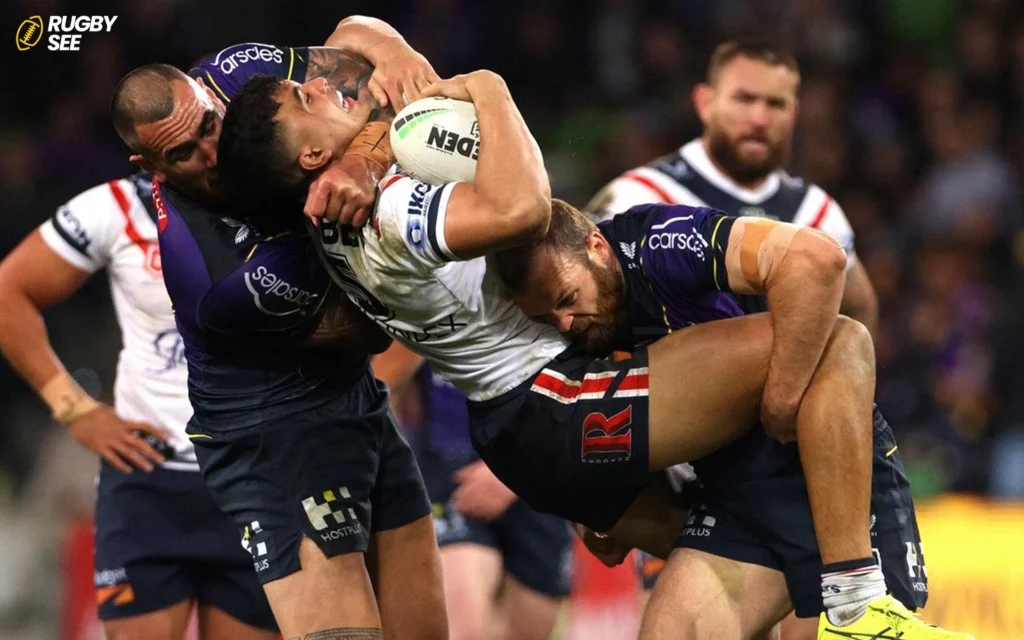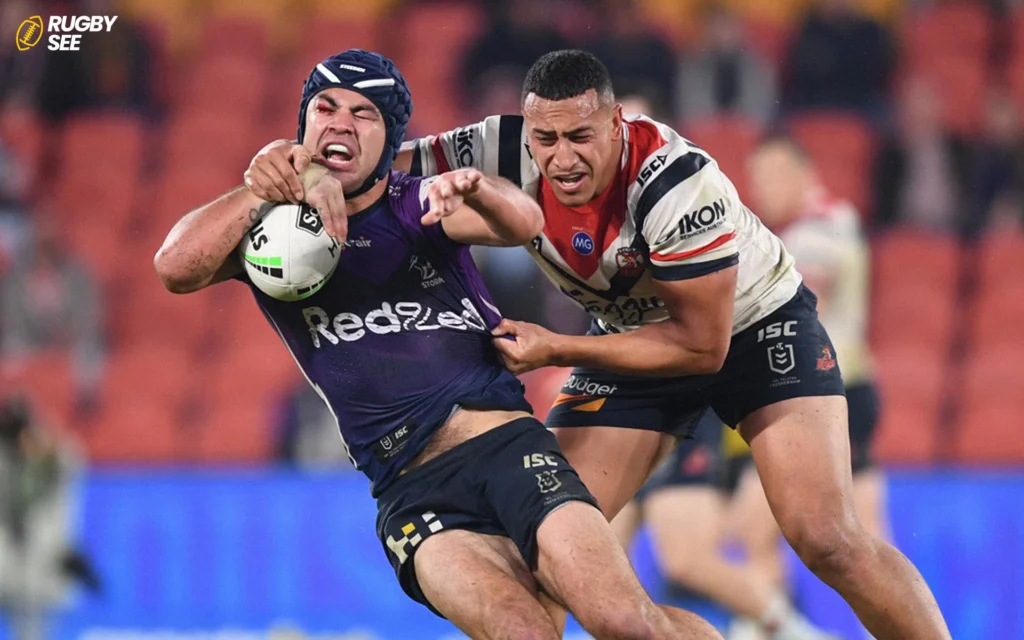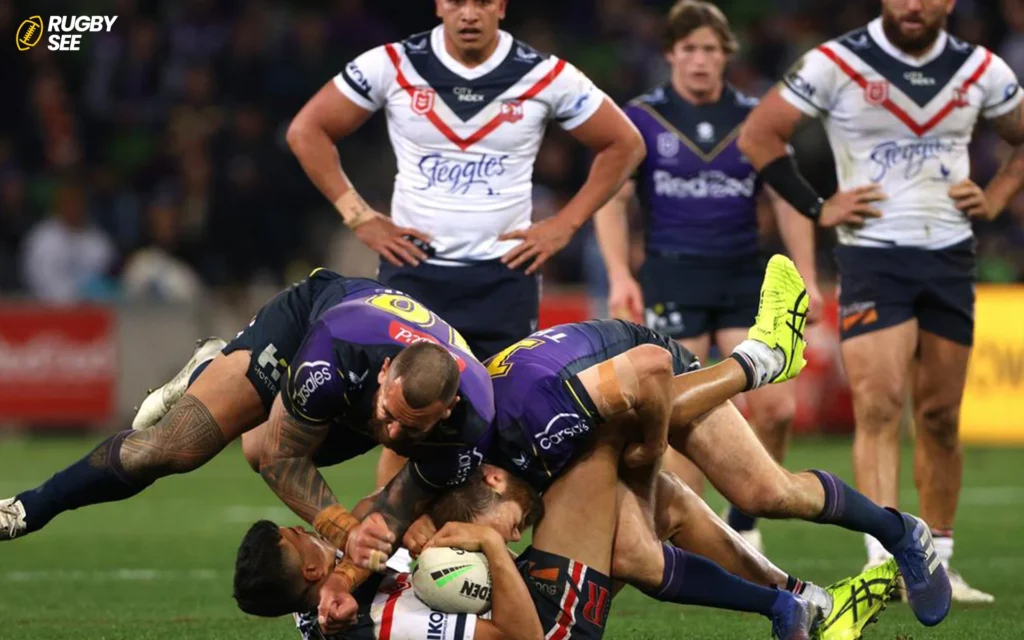Strength training is a vital part of a rugby player’s fitness regimen, helping them develop the strength, explosiveness and endurance needed to excel on the field. The squat, in particular, is a basic exercise that targets multiple muscle groups and increases overall lower body strength. In this Rugbysee article, we discuss the importance of squats in rugby training and examine common weights that rugby players squat.
Understanding the Importance of Squats in Rugby
Lower Body Strength
Rugby is a physically demanding sport that requires players to generate explosive power and drive from the lower body. Squats target key muscle groups such as the quadriceps, hamstrings, glutes, and calves, which are essential for sprinting, tackling, jumping, and scrummaging.
Injury Prevention
By strengthening the muscles around the knees, hips, and lower back, squats help reduce the risk of injuries common in rugby, such as strains, sprains, and ligament tears. Building stability and resilience in these areas can enhance player durability and longevity on the field.
Performance Enhancement
Improved lower body strength and power translate to enhanced performance in various aspects of rugby, including acceleration, agility, and tackling. Squats also contribute to greater force production during scrums, lineouts, and mauls, giving players a competitive edge over their opponents.

How Much Weight Do Rugby Players Squat?
Variability Among Players
The amount of weight that rugby players squat can vary widely depending on factors such as age, experience, position, and individual fitness levels. Professional players, who undergo rigorous strength and conditioning programs, typically squat heavier weights than amateur or junior players.
Elite Level Standards
At the elite level, rugby players may squat anywhere from 1.5 to 2 times their body weight or more. For example, a professional rugby player weighing 100 kilograms (220 pounds) might aim to squat between 150 to 200 kilograms (330 to 440 pounds) or higher, depending on their specific training goals and physical capabilities.
Positional Considerations
Different positions in rugby may prioritize certain aspects of strength training over others. Forwards, who engage in more physical confrontations such as scrums and mauls, often focus on building raw power and strength through heavy squats. Backs, who require greater speed and agility, may incorporate lighter weights and plyometric exercises into their training routine and if you want to know about Cheerleaders in Rugby read does rugby have cheerleaders.
Incorporating Squats into Rugby Training
Periodization
Rugby players typically follow a periodized training program that cycles through different phases of strength, power, and conditioning throughout the season. Squats are integrated into these programs as a foundational exercise during the strength-building phase, with variations such as back squats, front squats, and overhead squats to target different muscle groups.
Technique and Form
Proper technique and form are paramount when performing squats to maximize effectiveness and minimize the risk of injury. Rugby players work closely with strength and conditioning coaches to ensure they maintain a neutral spine, engage the core, and execute the movement with controlled depth and tempo.
Supplementary Exercises
In addition to squats, rugby players incorporate supplementary exercises to target specific muscle groups and movement patterns. Lunges, deadlifts, box jumps, and sled pushes are examples of complementary exercises that enhance overall lower body strength and power.

Advanced Training Techniques
Plyometric Squats
Incorporating plyometric exercises into rugby training can further enhance lower body explosiveness and power. Plyometric squats involve performing explosive jumps from a squat position, helping rugby players develop the rapid force production needed for quick sprints, tackles, and changes of direction on the field.
Front Squat Variations
Front squats, where the barbell is positioned in front of the body, target the quadriceps, core, and upper back muscles to a greater extent than back squats. Rugby players may include front squat variations, such as goblet squats or zercher squats, to improve core stability, posture, and overall functional strength.
Tempo Squats
Tempo squats involve controlling the lowering (eccentric) and raising (concentric) phases of the squat movement with specific time intervals. By incorporating tempo variations, such as slow eccentrics or pauses at the bottom of the squat, rugby players can improve muscular control, strength, and stability throughout the entire range of motion.
Monitoring and Progression
Tracking Performance Metrics
Rugby players monitor their squat performance by tracking key metrics such as weight lifted, repetitions completed, and perceived exertion. Keeping detailed training logs allows players to assess progress over time, identify areas for improvement, and adjust training variables accordingly.
Progressive Overload
To continue making gains in strength and power, rugby players implement progressive overload principles into their squat training. This involves gradually increasing the weight lifted, volume of training, or intensity of exercises over time to continually challenge the muscles and stimulate adaptation.

Individualized Programming
Strength and conditioning coaches tailor squat training programs to the individual needs and goals of rugby players. Factors such as injury history, biomechanical differences, and positional requirements are taken into account to ensure that training protocols are safe, effective, and aligned with the player’s long-term development and if you want to know about getting Concussions in Rugby read Do Rugby Players Get Concussions.
In conclusion, squats are an integral part of strength training for rugby players, contributing to enhanced performance, injury prevention, and overall athleticism on the field. By incorporating squats into their training regimen and progressively increasing the weight load over time, rugby players can build the lower body strength and power necessary to excel in all aspects of the game.
As rugby continues to evolve as a highly competitive and physically demanding sport, the importance of strength training, including squats, cannot be overstated. By prioritizing proper technique, periodized programming, and individualized training protocols, rugby players can optimize their squat performance and elevate their game to new heights.










